Fulfilling our mission to protect and restore the Morro Bay estuary for people and animals requires a lot of hard work in the field. At the Estuary Program, that often means spending time doing research and monitoring work out on the water. Read on to see the progress that our staff and volunteers have made in our eelgrass work during March of 2018.
Eelgrass
In the last few months, you might have seen our staff and volunteers in waders at Coleman Beach or trudging through the mud in the back bay during the last few months. They have been busy harvesting and planting eelgrass.
March culminated with staff completing our fourth, small-scale eelgrass restoration. You can read about the other efforts in these field updates: March 2017, July 2017, February 2018.
Between our two 2018 efforts so far (one in February and one in March), we planted 19 plots at five sites. Each plot measures one square meter and includes 72 rhizomes anchored to the bay bottom using garden staples.
Based on the success of our 2017 efforts, we decided to continue planting at our original location in the forebay, near channel marker 18, and to try four new locations that extend throughout the mid and back bay.
At the forebay site, we continued planting along the same elevation gradient as before, but also planted some plots deeper in the water (in the low intertidal) and some shallower (in the high intertidal). This will help us better understand the elevations we should focus our restoration efforts on.
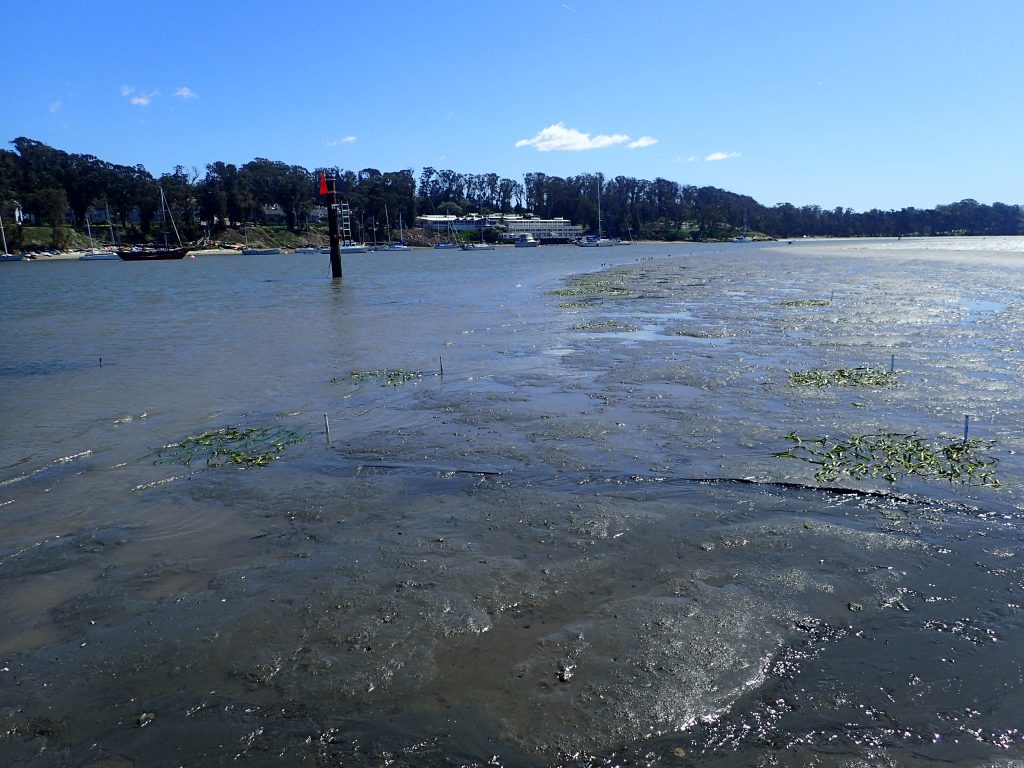
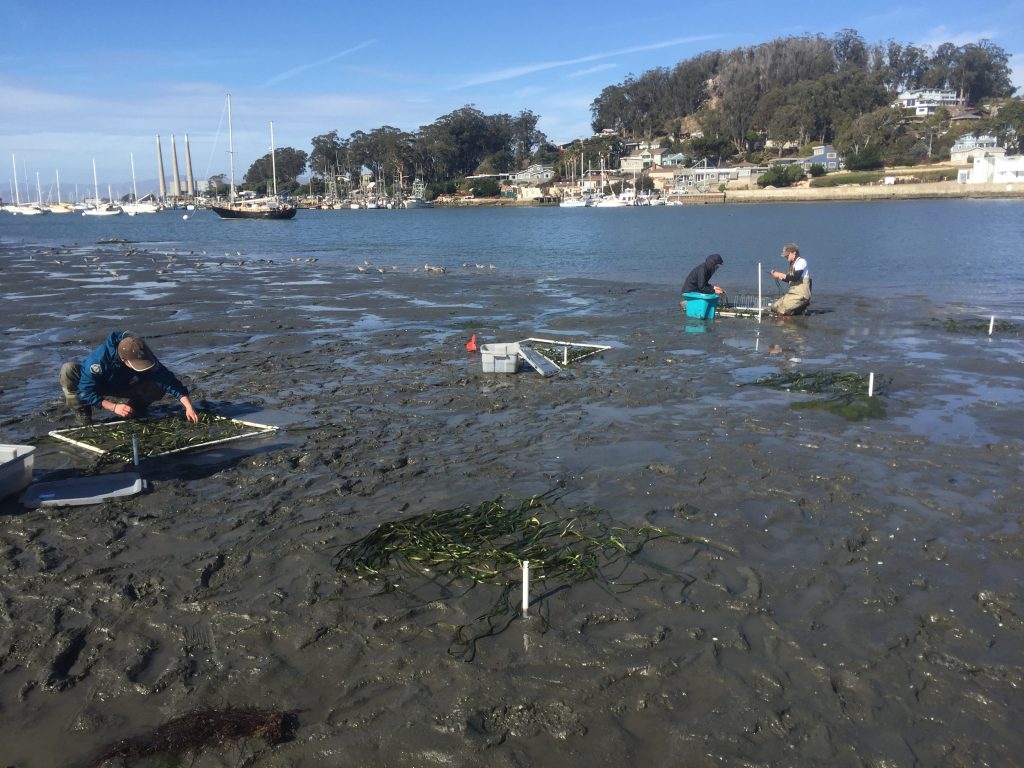
New sites extend farther back into the bay.
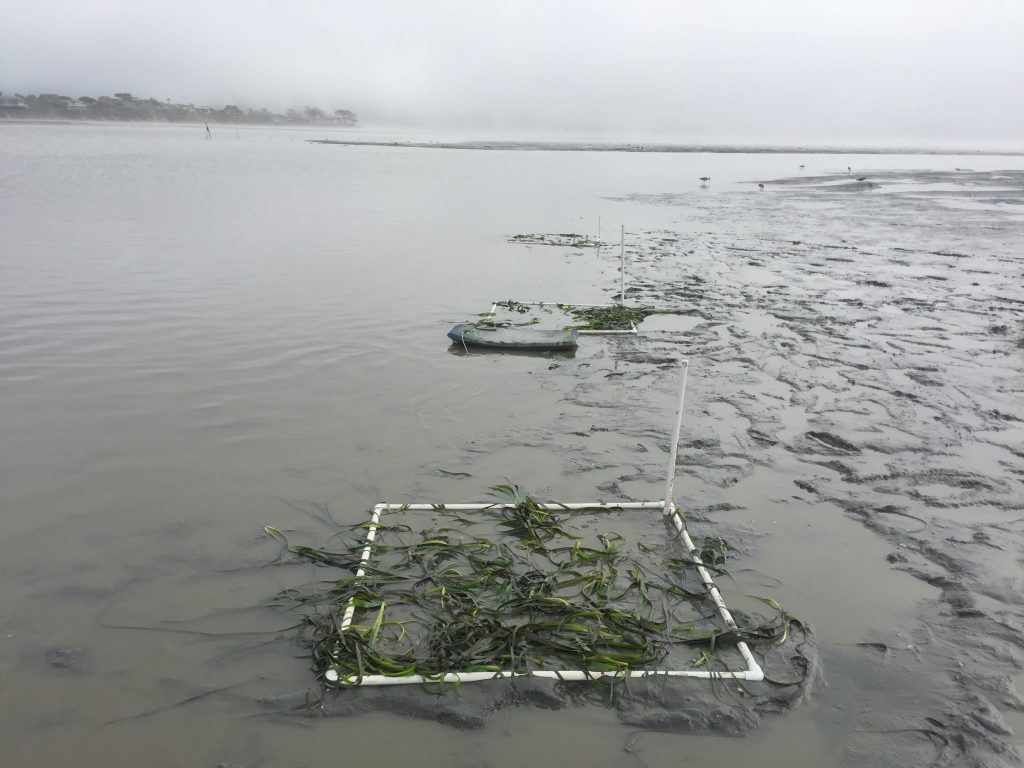
All the way back to Mitchel Drive in Los Osos.
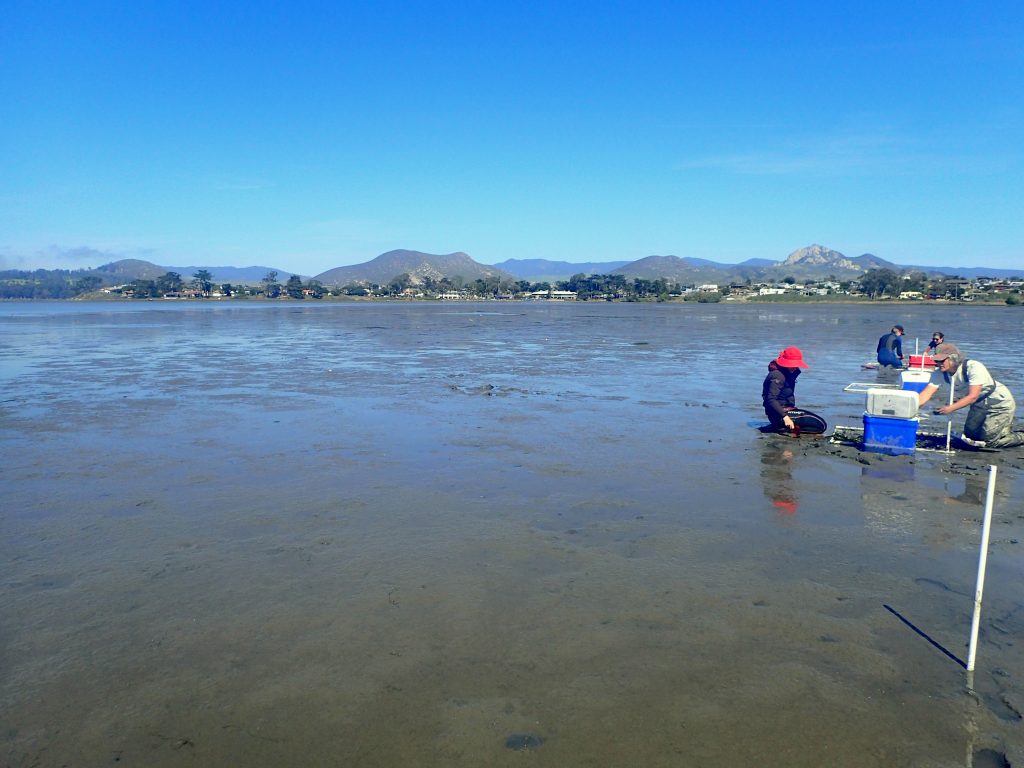
In March, we tried a new-to-us planting method that we are calling the rebar method. For this, we took a smooth piece of rebar and bent it into an ‘L’shape. We tied the eelgrass rhizomes to the long straight section of rebar using twine and used the shorter bent section to anchor the rebar in the sediment.
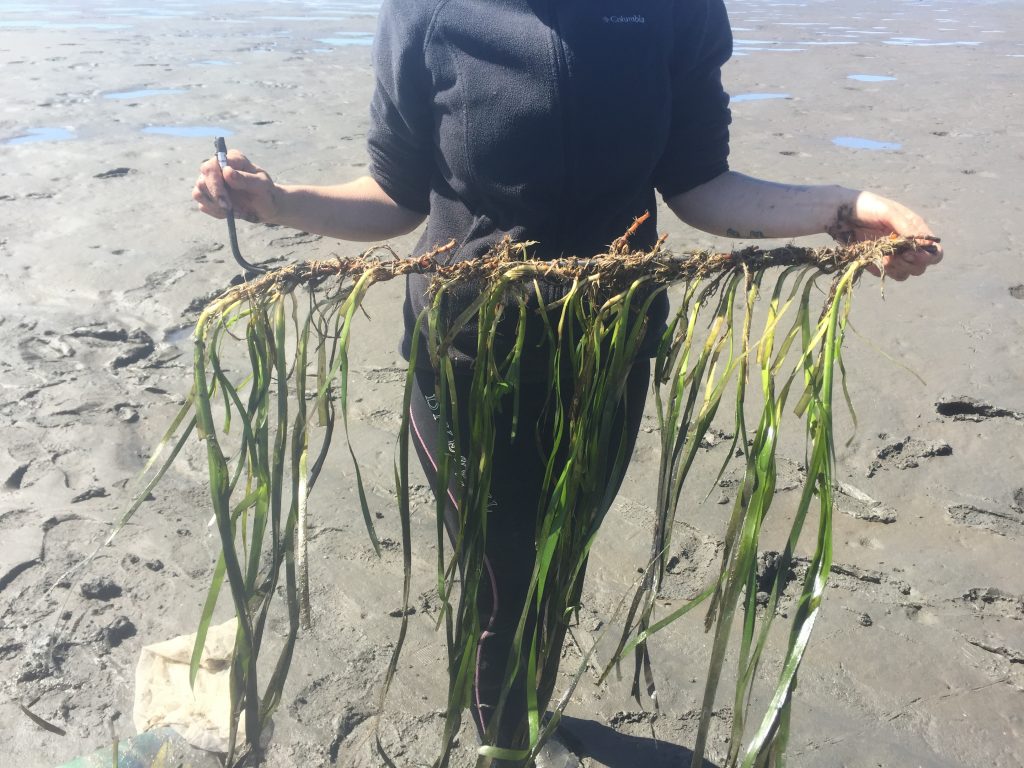
The rebar is anchored into the sediment and the rhizomes touch the sediment, but are not buried inthe sediment. We chose to test the rebar method based on positive results achieved in Puget Sound by Jeffrey Gaeckle of the Washington Department of Natural Resources. This method is quick and easy to do, and if successful in Morro Bay, it would allow us to plant eelgrass in muddier portions of the bay we can’t easily access.
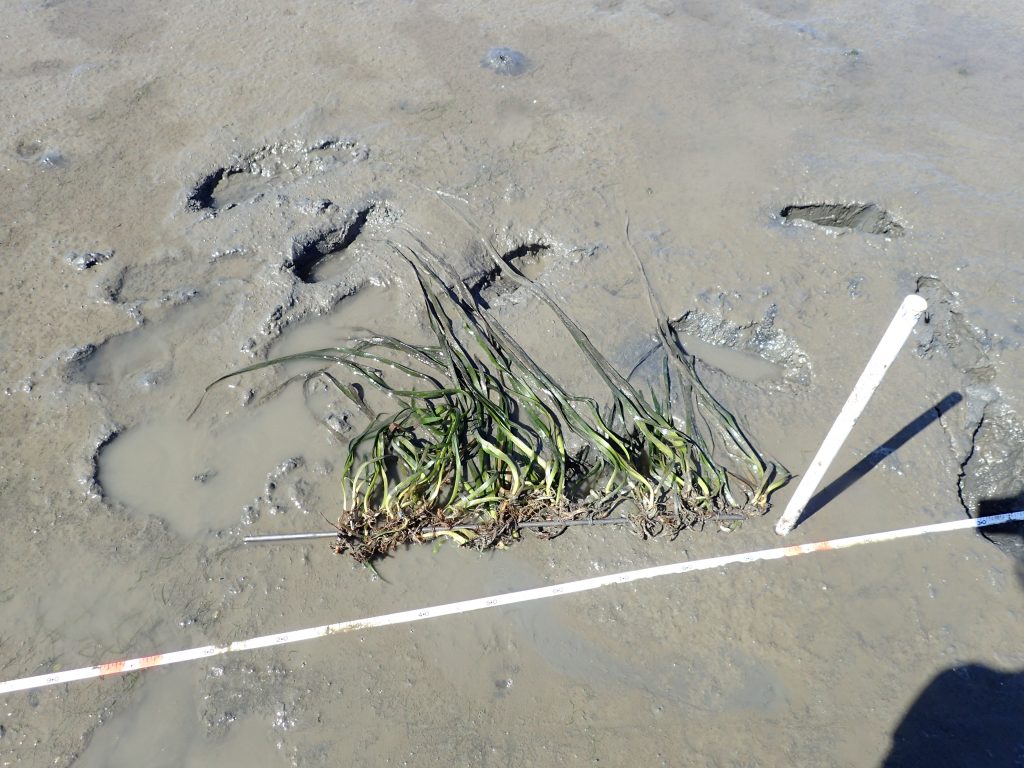
Thank you, volunteers!
This effort would not have been possible without the help of our amazing volunteers. Over the course of 9 days, we had 25 volunteers help with this effort, in addition to all the Estuary Program staff members! A huge thank you to Grassy Bar Oyster Company and Morro Bay Oyster Company for providing boat support for these transplanting efforts!
Creeks
On March 1st, Canet Road had received a total of 4.72” of rain for the year, making it one of the driest “rainy seasons” on record for parts of California.
Despite the dry winter, we were excited to find a trout sitting on a redd( i.e. a trout nest) on Pennington Creek while we were out measuring stream flow! A redd is a nest dug in the gravel by fish in the Salmonidae family, such as salmon and steelhead trout (Oncorhynchus mykiss).
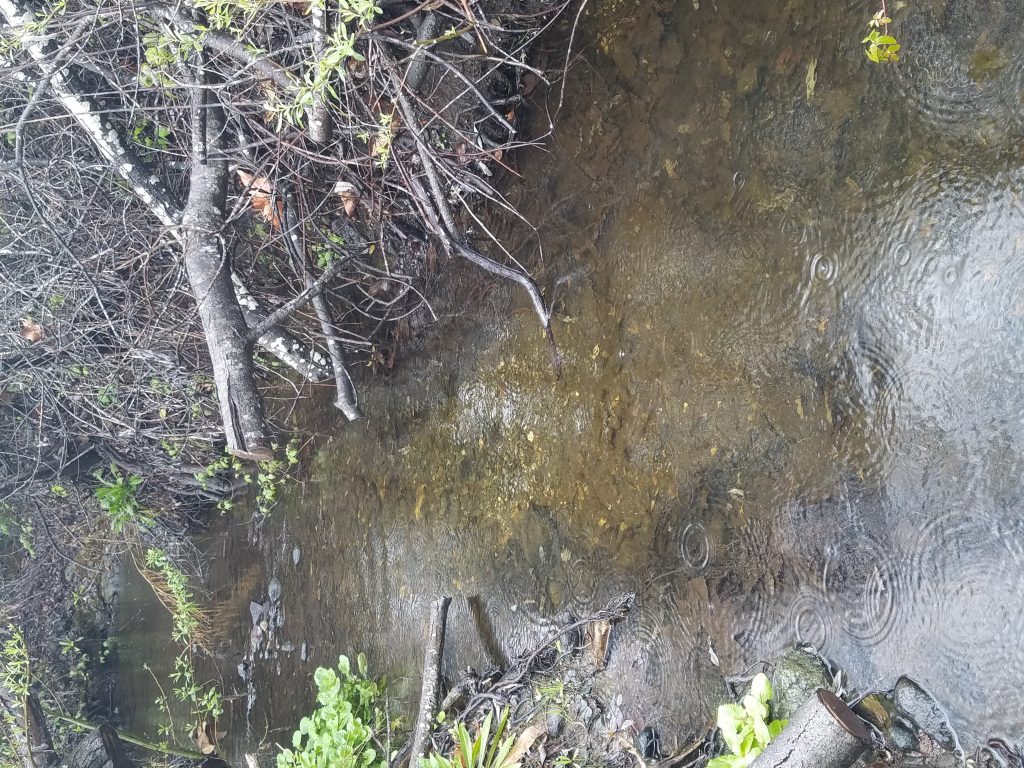
Stay tuned for a blog post from our AmeriCorps Watershed Stewards Program members about their experiences conducting redd surveys this year.
Luckily, despite the calm winter, we got an exciting storm towards the end of the month!
According to John Lindsey, in mid-March, San Luis Obispo was at about 30 percent of average rainfall. By the time the storm passed through, San Luis Obispo was at 60% of normal. This storm dumped the highest 24-hour rainfall totals for our area since December, 2010. It was enough to make Chorro Creek rise enough to (momentarily) top the Canet Road Bridge

It was also enough to make Walter’s Creek start flowing, and as you’ve probably noticed, turn the hills an amazing green.

We deployed sediment samplers on both Chorro and Walter’s Creek for this storm series, and will be heading back into the lab to process sediment samples. You can learn about why and how we monitor sediment in this blog post.